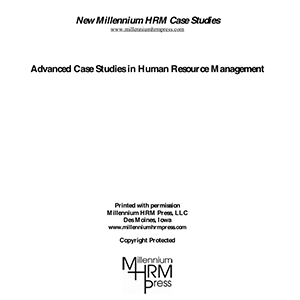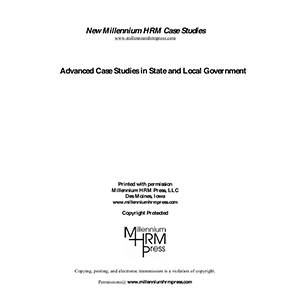Description
Written by a team of experienced researchers, teachers and managers, Managing People as Assets presents the most comprehensive set of human resource management case studies currently available. The cases are sure to engage critical thinking and facilitate individual and group decision making. Especially noteworthy are the chapters on: the use and application of case studies as a learning device, the changing nature of work and the workplace in the 3rd Millennium, and numerous web sites that are frequently used by Human Resource Management specialists.
The 57 real-world case studies are based on management and policy situations that commonly occur in all three economic sectors — public, private and nonprofit. Nearly 300 meaningful concepts and trends associated with the changing nature of work, the workplace, technology and demographics of 21st century organizations are explored. Managing People as Assets is a must have teaching and training resource that enables executives, managers, supervisors and policy makers at all stages of professional and administrative experience to purposively integrate theory with practice and make the management of people live.
Testimonials
“The most engaging and comprehensive public HRM book on the market. All the cases are
well-written, up-to-date, and original.”
— Dr. Richard C. Kearney, School of Public and International Affairs, North Carolina State University
“This book covers contemporary issues in public personnel management in a manner that is
relevant and up-to-date. The questions which follow each case study guide the discussion
and provide an essential system for case analysis.”
— Dr. Laura Wilson-Gentry, School of Public and International Affairs, University of Baltimore
Topics Addressed
Nearly 300 meaningful concepts and trends associated with the changing nature of work, the workplace, technology and demographics of 21st century organizations are explored. In addition to the standard issues of everyday human resource management such as recruitment, selection, evaluation, compensation, benefits, and legal/liability, the cases deal with the salient topics of globalization, lean and “cutback” management principles, ethics, outsourcing, collaboration, transparency, accountability, sustainability, volunteerism and violence/security in the workplace.
Sample Cases
Pictures are Worth a Million Words – pdf
Special Privileges for Officials – pdf
Instructor Resources
Index of Topics
As an aid to instructors in selecting cases, management and policy topics are alphabetically arranged in the Index of Topics. This listing ties each case to the major and minor topics which receive emphasis. The topic listings are followed by the case numbers in which they are addressed.
Case Histories Keyed To Topics
An additional learning tool which lists the cases by number and title according to the table of contents and topics emphasized in the cases.
Index of Names, Positions, and Organizational Types
This handy reference tool ties the name of characters and their position to the pages of the case studies where they are mentioned.
Student Tools and Learning Assessments
Case Logs and Administrative Journal Entries
Each case is accompanied by a set of questions and instructions intended to stimulate thinking and discussion about the problems under consideration. This case analysis and learning assessment is printed on perforated pages and may be removed from the book for time-saving evaluation purposes.
Learning Assessment
Provided at the end of each case is a Learning Assessment tool provided to help students reflect on the case and summarize the class discussion regarding the case issues and conclusion for preferred approach to the situation presented.





Reviews
There are no reviews yet.